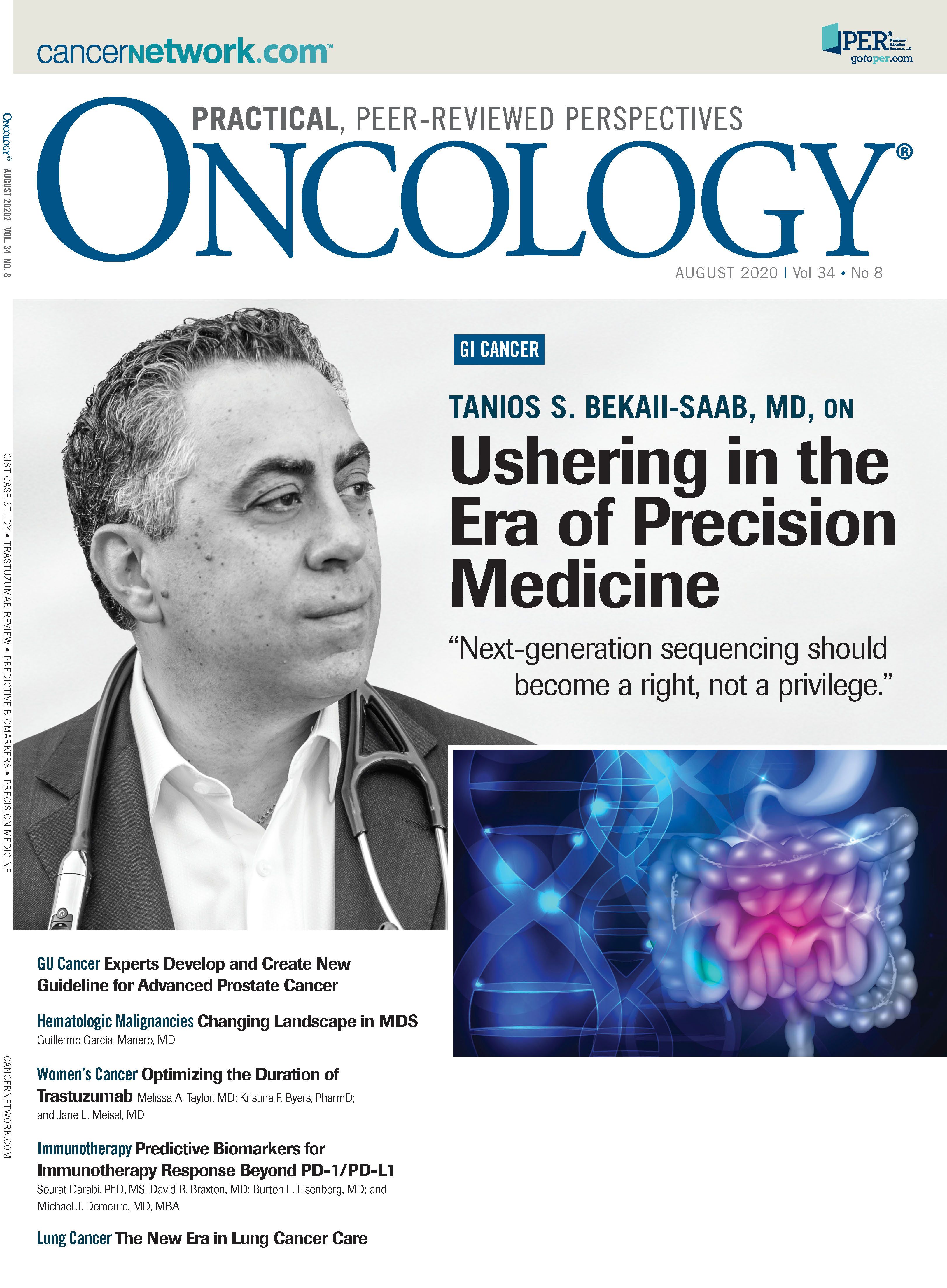Next-Generation Sequencing Testing in GI Cancer: A Patient’s “Right”? Or Wrong?
In this issue of ONCOLOGY®, the Q&A with Tanios S. Bekaii-Saab, MD, raises some interesting questions on next-generation sequencing (NGS) testing. Bekaii-Saab is a national leader in gastrointestinal (GI) cancer, especially hepato-biliary cancer. He has contributed to important studies in GI Oncology through many organizations and especially Academic and Community Cancer Research United, and most importantly, he is a friend.
In this Q&A (see page 314), he says that NGS testing should be done at diagnosis for all patients with GI cancer, and this is no longer a privilege but a patient’s right. Although I agree with the basic premise that NGS will give us the greatest amount of information in a single test, I think this statement needs a little more consideration.
First, at the time of diagnosis, the test is not sent immediately but usually requires the medical oncologist to try to order it after first consulting with the patient, and potentially from another hospital where the surgery was done. First, if an endoscopic biopsy was done, we often find (after considerable chasing) that insufficient tissue remains. Second, this process takes a minimum of 2 weeks, so now the patient is already 4 to 5 weeks post diagnosis, and possibly more if they had surgery with a recovery period. Further waiting is often traumatic for the patient.
Next, we have to consider the utility of NGS testing. Bekaii-Saab mentions microsatellite instability status, which we must be sure to get right. But that is usually done on the biopsy or surgical specimen by immunohistochemistry (IHC) for presence or deficiency of mismatch repair enzymes. We do not need NGS for this. Next is RAS and RAF status. These key enzymes in the growth signaling pathway need to be known to get the regimen correct. But these can be done in 48 hours or less by a polymerase chain reaction test than requires far less DNA. At present, RAS status may be far less consequential than right versus s left sidedness and is only helpful if one wishes to start with an anti-EGFR antibody. BRAF status is quite consequential for both prognosis and treatment—particularly as the BRAF inhibitors move into first-line therapy. But NGS sequencing is not as fast or cheap as a PCR test. What about HER2? It is so important for both prognosis and treatment with anti-HER2 antibodies (please consider SWOG 1613 trial, now accruing) and is a critical biomarker for those overexpressing. But seriously, we have been defining HER2 overexpression by IHC for more than a decade in breast cancer; we do not need NGS for this. We just need to ensure those who are RAS wild type are tested with IHC and fluorescence in situ hybridization—and they will constitute an 8% subgroup in this setting.
So, what remains? A few important NTRK and similar fusions constituting 1% of all colon cancer. It’s true you could miss a few patients with high tumor mutational burden, but these are mostly POLE mutated and rarer than hen’s teeth. Ninety percent of the time we will not find any actionable mutation given our state of knowledge and available therapeutics.
Finally, let’s consider the cost of upfront NGS for colon cancer alone. With 40,000 new cases per year of metastatic colon cancer alone, at $5000 each for NGS, we would spend $200 million! The options above cost a fraction of this cost. We can save the money and use it for circulating DNA testing later in the course of therapy when mutations may have evolved. NGS is a very useful test in many circumstances, but in most GI cancers the mutational landscape and therapeutic options limit its utility.
